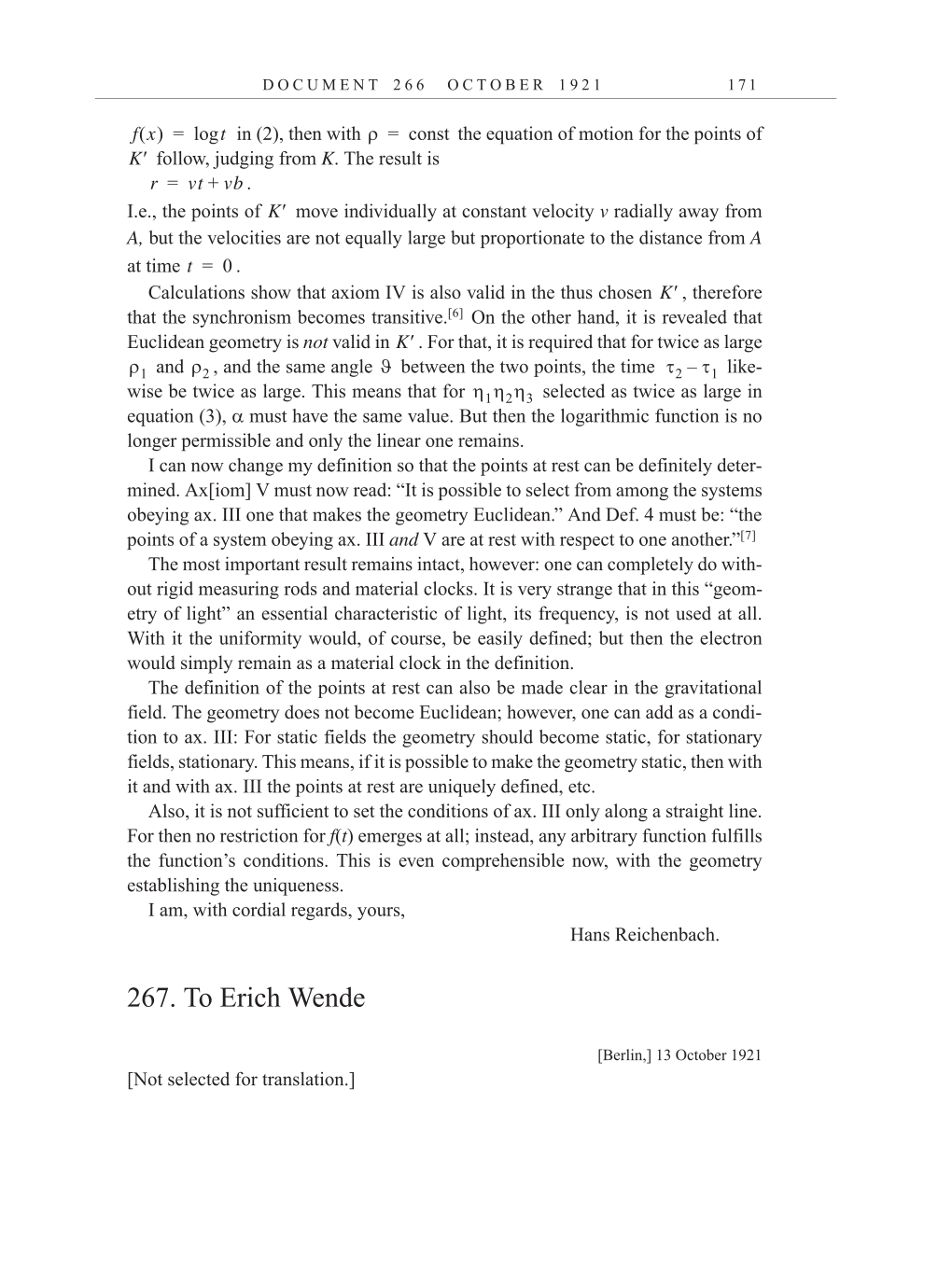D O C U M E N T 2 6 6 O C T O B E R 1 9 2 1 1 7 1
in (2), then with the equation of motion for the points of
follow, judging from K. The result is
.
I.e., the points of move individually at constant velocity v radially away from
A, but the velocities are not equally large but proportionate to the distance from A
at time .
Calculations show that axiom IV is also valid in the thus chosen , therefore
that the synchronism becomes
transitive.[6]
On the other hand, it is revealed that
Euclidean geometry is not valid in . For that, it is required that for twice as large
and , and the same angle between the two points, the time like-
wise be twice as large. This means that for selected as twice as large in
equation (3), must have the same value. But then the logarithmic function is no
longer permissible and only the linear one remains.
I can now change my definition so that the points at rest can be definitely deter-
mined. Ax[iom] V must now read: “It is possible to select from among the systems
obeying ax. III one that makes the geometry Euclidean.” And Def. 4 must be: “the
points of a system obeying ax. III and V are at rest with respect to one
another.”[7]
The most important result remains intact, however: one can completely do with-
out rigid measuring rods and material clocks. It is very strange that in this “geom-
etry of light” an essential characteristic of light, its frequency, is not used at all.
With it the uniformity would, of course, be easily defined; but then the electron
would simply remain as a material clock in the definition.
The definition of the points at rest can also be made clear in the gravitational
field. The geometry does not become Euclidean; however, one can add as a condi-
tion to ax. III: For static fields the geometry should become static, for stationary
fields, stationary. This means, if it is possible to make the geometry static, then with
it and with ax. III the points at rest are uniquely defined, etc.
Also, it is not sufficient to set the conditions of ax. III only along a straight line.
For then no restriction for f(t) emerges at all; instead, any arbitrary function fulfills
the function’s conditions. This is even comprehensible now, with the geometry
establishing the uniqueness.
I am, with cordial regards, yours,
Hans Reichenbach.
267. To Erich Wende
[Berlin,] 13 October 1921
[Not selected for translation.]
f x logt = const =
K
r vt vb + =
K
t 0 =
K
K
1 2 2 1
–
1 2 3
